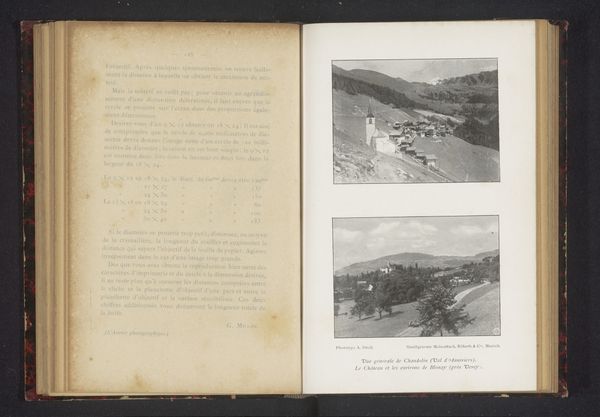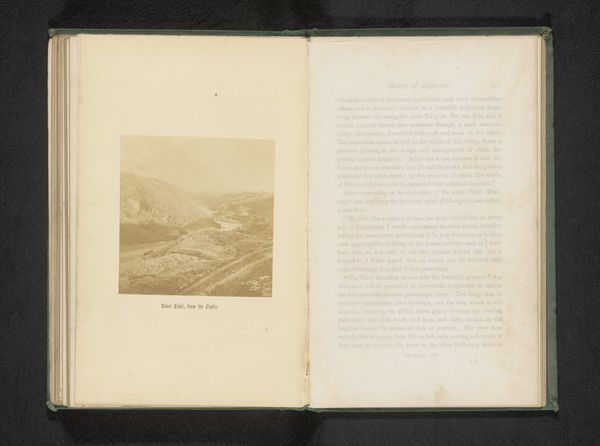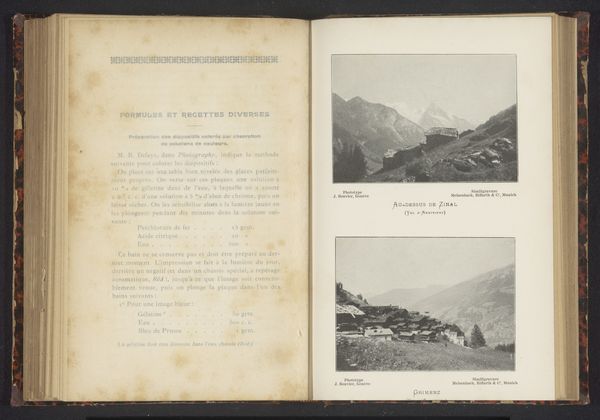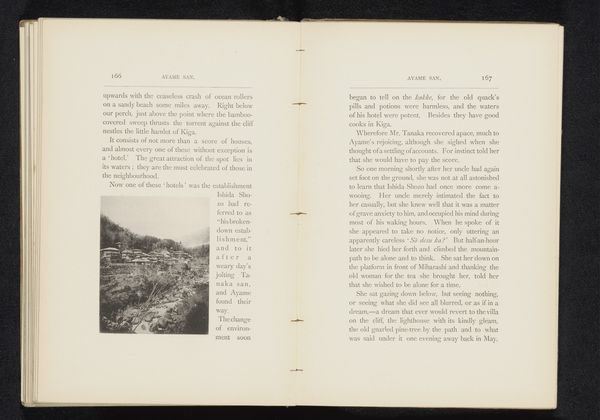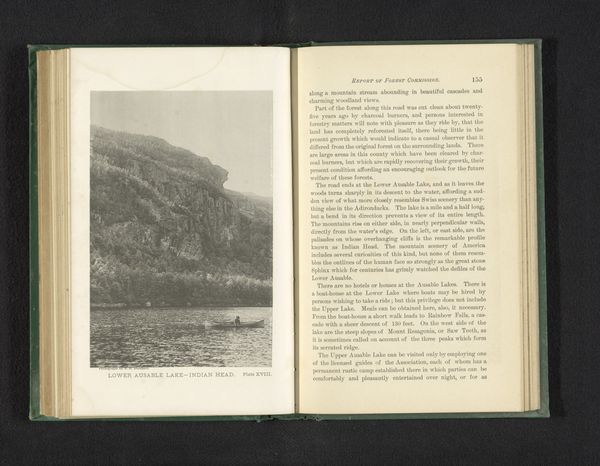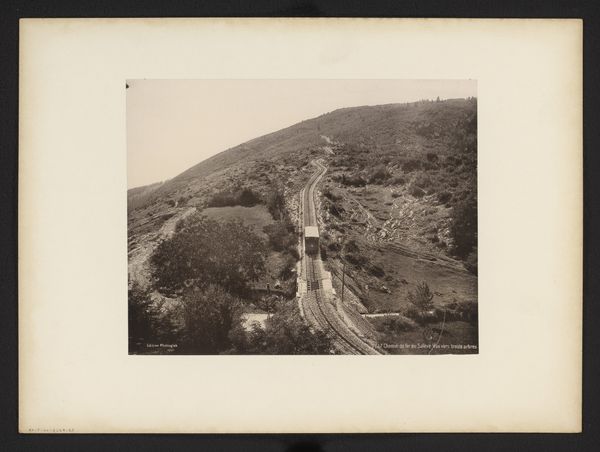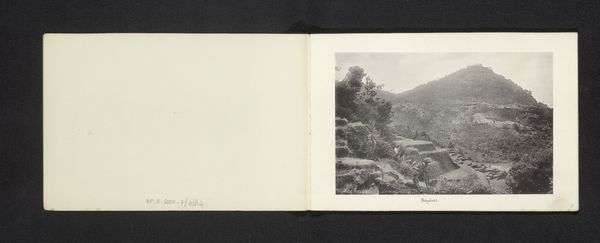
print, photography
#
pictorialism
# print
#
landscape
#
photography
#
mountain
Dimensions: height 208 mm, width 141 mm
Copyright: Rijks Museum: Open Domain
Editor: This is a photograph titled "Gezicht op een stenen brug in een bergachting gebied," or "View of a stone bridge in a mountainous region," taken before 1893, potentially by E. Thévoz. It's printed in what appears to be a book. There's such a stillness to it, a kind of quiet grandeur. What do you see in this piece? Curator: I see more than just a picturesque scene. This image, captured through the lens of Pictorialism, is deeply rooted in its historical moment. Consider the rise of industrialization and urbanization during that period. Artists often turned to idealized landscapes as a form of social commentary, a longing for a simpler, perhaps less exploited, time. Editor: That’s interesting. So, the mountains and the old bridge… they weren't just beautiful, they represented something more? Curator: Exactly. The bridge itself, a man-made structure seemingly in harmony with nature, becomes a symbol. Who built the bridge? For what purpose? Consider the social structures, the labor, involved in its construction and maintenance. How does this relate to the power dynamics within the community and their relationship to the natural world? Editor: So, it's a critique of… Progress? Or at least, a commentary on its costs? Curator: Perhaps. It is important to not project a contemporary definition of progress. But a nuanced understanding of the anxieties and ideologies of the era—of the social and political landscapes of 19th century Europe—is essential to fully grasping what Thévoz is communicating. Think about class, land ownership, access to resources, and how these themes subtly permeate even the seemingly tranquil scenery. What stories might the inhabitants of the depicted houses hold? Editor: That definitely changes how I see it. I was just appreciating the aesthetic, but it’s clearly connected to so much more. Curator: Precisely! By exploring these connections, art becomes a powerful tool for understanding ourselves and the world around us. Editor: I'll never look at a landscape the same way again! Curator: Good, neither will I.
Comments
No comments
Be the first to comment and join the conversation on the ultimate creative platform.
